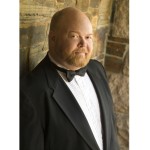“Extra” Ornamentation in Baroque Organ Music, Especially Bach
Baroque music, the history books tell us, is highly ornate. Yet, there apparently was a contemporary performing tradition in which players routinely added more ornamentation of their own. Bach’s music was criticized in his time as having all (or most) of the ornamentation written out, leaving no choices for the performer to make, yet, today, we hear ornaments added to his music, as well. Sometimes the elaboration we hear sounds elegant and appropriate, at other times awkward and overdone; old sources all reference “good taste” as an arbiter. How does a performer decide whether or when to add ornamentation, and how much is too much? In this lecture, sources for performance practice are consulted, but study and reflection of music itself serve as a guide for recommendations, with many examples given.
Peter Sykes is associate professor of music and chair of the Historical Performance Department at Boston University, where he teaches organ, harpsichord, performance practice, and continuo realization. He is also music director of First Church in Cambridge and director of the Keyboard Day segment of the Boston Early Music Festival. He performs extensively on the harpsichord, clavichord, and organ, and has made ten solo recordings of organ repertoire ranging from the music of Buxtehude, Couperin, and Bach, to that of Reger and Hindemith, to his own acclaimed organ transcription of Holst’s The Planets. His recently released a recording of the complete Bach harpsichord partitas on the Centaur label, and will soon release an all-Bach clavichord recording and the complete Book I of the Well-Tempered Clavier. He also performs and records with Boston Baroque and Aston Magna. A founding board member and current president of the Boston Clavichord Society, he is the recipient of the New England Conservatory’s 1978 Chadwick Medal and 2005 Outstanding Alumni Award, the Cambridge Society for Early Music’s 1993 Erwin Bodky Prize, and the St. Botolph Club Foundation’s 2011 Distinguished Artist Award.

